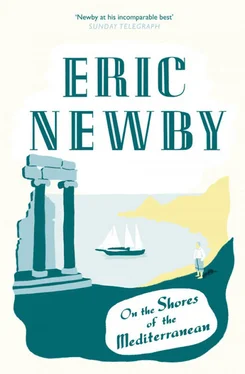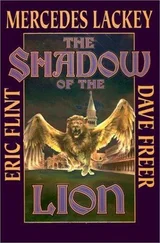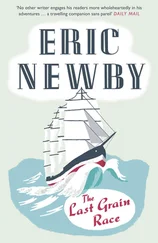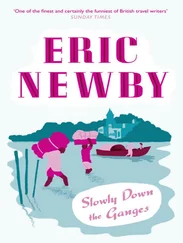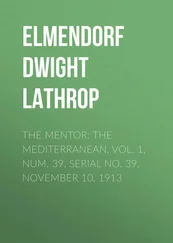To the Austrians it was Der Karst, or Das Küstenland, now not much more than a nostalgic memory of a time when Trieste was the Austro-Hungarian Empire’s principal port on the Mediterranean. To the Yugoslav nation it is the Kras, what they failed by a hair’s-breadth to seize at the end of the Second World War, which would have given them a prestigious outlet on the Mediterranean, and which became a danger point in their relationship with the West. To the Slovenes it is also the Kras, but to them a place where for some 1300 years they have wrested a hard-earned living from its inhospitable terrain.
After 1918 it was annexed by Italy, and Slovene villages began to have their names printed together with their Italian equivalents on signposts and on Italian maps, as they still do on Italian maps even though many of them are now in Yugoslavia. Under Mussolini, the teaching of Slovene was forbidden and Slovene schoolteachers were replaced by Italians, the Slovene teachers being sent to Italy. There, those who spoke no Italian – most spoke German as a second language (the Slovenes, as members of the Empire, fought in the Austrian army in the First War) – experienced the same difficulty in communicating with their pupils, until they had learned the language, as did monoglot Neapolitans sent to teach Italian to Slovene children, which was what happened to my Slovene father-in-law.
That afternoon we crossed out of Italy at the frontier post at the hamlet near Trieste called Fernetti and into Yugoslavia at Fernetič, which is the name for the same place on the Yugoslav side.
Although it is fairly easy to find frontier officials equally disagreeable to deal with as the Yugoslavian officials on the shores of the Mediterranean, it is difficult to find any more disagreeable to deal with. If nothing else, they make one realize the difference in the tempo of life in Yugoslavia and Italy, now the length of a cricket pitch away. To watch a Yugoslav frontier official examining your passport is like watching one of those fascinating slow motion films, taken over a period of weeks, which shows a plant breaking through the earth, burgeoning and gradually flowering before one’s eyes. Wriggling among the contents of our luggage, the fingers of the customs official were like pale grubs. Thus we entered for the umpteenth time the country in which my wife was born, and to which she had so often threatened to return for ever.
As her mother was now very recently dead – her father had died some years previously – we had decided that this time, before going to stay with other members of her family, we would vary what had been for some thirty-five years an immutable itinerary, and visit first of all a distant kinswoman of hers who had invited us to spend the night in the village in which she lived in the eastern part of the Kras. Here, as in other places in the Mediterranean lands, kinsmen, and kinswomen particularly, recognize kinship to a point at which, in England – but not perhaps in Wales or Scotland – they would long since have ceased to be acknowledged as still existent. Here, everywhere you turn, are to be found kinsmen and kinswomen extending outwards in ever-increasing circles, like ripples on a pond when you throw a stone into it until, in the end, rather like the family of Queen Victoria which covers over two pages of small print in Whitaker’s Almanack , almost everyone is your kin.
This village could have been the prototype of any village in the Kras. Its stone houses, huddled together as if for mutual protection, had walls feet thick, most of them hidden away in walled courtyards behind heavy oak doors under high, carved stone archways. These courtyards, havens in which the owners and their animals shelter from the rigours of the climate and modern Yugoslavia outside, are full of flowers in summer, something about which Slovenes are quite dotty. (My mother-in-law once, at the age of eighty, brazenly took cuttings inside one of the temperate houses in the Royal Botanical Gardens at Kew which did very well in her garden in the Kras.) Overlooking the courtyard, at the upper storey, a wooden balcony runs the whole length of the front of the house with an outside staircase leading up to it, and this balcony and the staircase leading up to it are also full of flowers – asters, dahlias, pansies and geraniums, mostly displayed, as are the ones in the courtyard, in old tin cans with their lids cut off.
The bedrooms look out on to the balcony. The old-fashioned ones are furnished with big dark wooden or iron beds some of which weigh up to three or four hundred pounds. They stand on scrubbed wooden floors and the walls are hung with photographs of immediate ancestors that look as if they have been taken as well as framed by the local undertakers. Younger married people now have flashier furniture, wardrobes and beds with veneer and lots of mirrors, but the women, young or old, unless they are Party members, will have hung a print of the Virgin above the bed as an insurance against misfortune and, perhaps, excessive high jinks.
In the centre of the village is the church, with a white bell tower rising above it to one side and sometimes with the bell rope swinging in the breeze under an arch at the foot of it.
Nothing that the Government or the Party could do after the war, when Yugoslavia became officially communist, to stop the people, particularly the women, in these villages from going to church, was even remotely successful. In the years from 1945 onwards, when priests were forbidden to wear vestments and say mass, they went to the church just the same and simply stood inside it in a silent gesture of defiance and disapproval. When transport to distant places of pilgrimage to which they were accustomed to go was denied them, they set off for them on foot.
Wanda’s kinswoman worked as a waitress in a gostilna , a village inn. Its courtyard was shielded from the sun by a trellis of vines so thick that those sitting beneath it were in perpetual twilight. Under it men were playing cards, slapping them down on the tables and making a great deal of noise. One of the characteristics of the Slovene language, at least up here on the Kras, is that those who speak it often sound as if they are engaged in a violent quarrel when, in fact, they are thoroughly enjoying themselves. Also under the vines there was a bowling alley made of rolled earth. In such a place the only woman on view is usually the waitress. The gostilna is like a London club, a man’s world.
From the terrace of the inn, long, stone-walled expanses of rock with a bit of earth in them masquerading as fields, and interspersed with windbreaks of young trees, swept up to the foot of the mountains, the Nanos, and the Javornik. The Nanos with its bare, high summit covered, as it often is, with what looked like a wig of white cloud; the Javornik, to the south of the gap through which the road and railway run eastwards to Ljubljana, covered with dense forest which still harbours within its fastnesses red deer, wild boar, wolves and what are some of the last European brown bear.
Marija, Wanda’s soi-disante kinswoman, was a widow of indeterminate age, good-looking, if not positively sexy, in a black, widow’s-weedy sort of way. She took us into the building and sat us down at a table in a pale, austere room of which the only other occupants were four fierce-looking young men in blue overalls, who looked as if they might be off duty from a filling station and were playing the same game that was being played on the terrace, a form of whist, slamming the cards down on the table as if they were practising to cut it in quarters with a karate chop, making the rafters ring with cries of what was either rage or triumph.
In one corner there was a big white-tiled wood-burning stove with a long, silver-painted metal pipe extending up from it and across the width of the room and then out into the open air through a hole in the outer wall, which would ensure that the room was always stiflingly hot in winter, however cold it was outside. Old-fashioned lace curtains effectively obstructed what would have been the same view from the windows that one could enjoy outside on the terrace, and the walls, which had been stencilled with a pale apple-green pattern on a white background, rollers being used for this purpose, were hung with the stuffed heads of various sorts of small game, game that were now completely extinct a few miles away over the border in Italy. (It is a paradox that the enthusiasm of the communist apparat for the chase organized on capitalist lines, to the exclusion of the hoi polloi , has led in many communist countries to a positive proliferation of species that in many capitalist countries in Europe have long since become extinct.)
Читать дальше
